Rotasyonel ayak bileği kırıklarının %46'sına posterior malleol kırıkları eşlik eder. Posterior malleolün doğrudan görüntülenmesi ve fiksasyonu için posterolateral yaklaşım, kapalı redüksiyon ve anteroposterior vida fiksasyonuna kıyasla daha iyi biyomekanik avantajlar sunan yaygın olarak kullanılan bir cerrahi tekniktir. Bununla birlikte, daha büyük posterior malleol kırık parçaları veya medial malleolün posterior kolikulusunu içeren posterior malleol kırıkları için posteromedial yaklaşım daha iyi bir cerrahi görüş sağlar.
Araştırmacılar, üç farklı posteromedial yaklaşım boyunca posterior malleolün görünürlük aralığını, nörovasküler demet üzerindeki gerilimi ve kesi ile nörovasküler demet arasındaki mesafeyi karşılaştırmak için kadavra üzerinde bir çalışma yürüttüler. Sonuçlar yakın zamanda FAS dergisinde yayınlandı. Bulgular aşağıdaki gibi özetlenebilir:
Şu anda, arka malleolusu ortaya çıkarmak için üç ana posteromedial yaklaşım mevcuttur:
1. Medial Posteromedial Yaklaşım (mePM): Bu yaklaşım, medial malleolün arka kenarı ile tibialis posterior tendonu arasından girer (Şekil 1'de tibialis posterior tendonu gösterilmiştir).
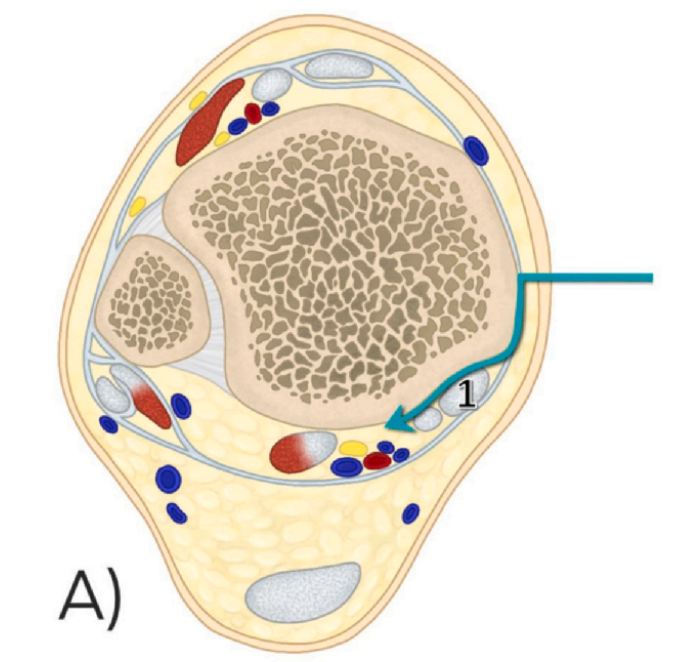
2. Modifiye Posteromedial Yaklaşım (moPM): Bu yaklaşım, tibialis posterior tendonu ile fleksör digitorum longus tendonu arasından girer (Şekil 1'de tibialis posterior tendonu, Şekil 2'de ise fleksör digitorum longus tendonu gösterilmektedir).
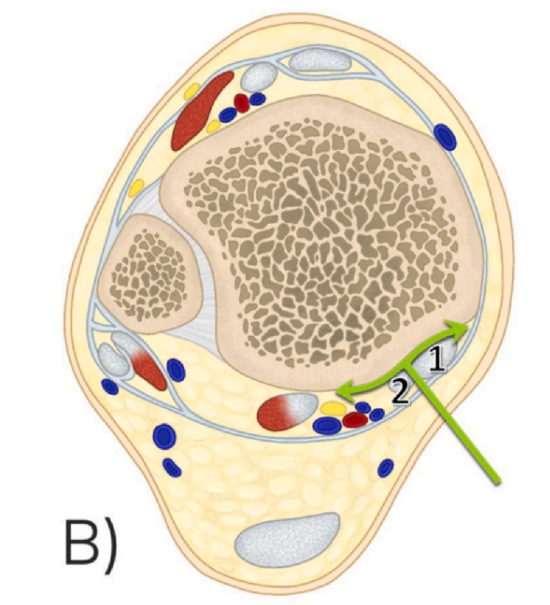
3. Posteromedial Yaklaşım (PM): Bu yaklaşım, Aşil tendonunun medial kenarı ile fleksör hallucis longus tendonu arasından girer (Şekil 3'te Aşil tendonu, Şekil 4'te ise fleksör hallucis longus tendonu gösterilmektedir).
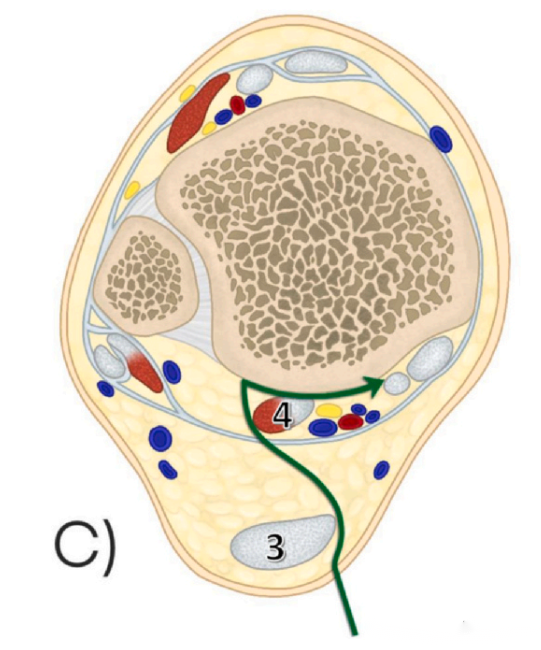
Nörovasküler demet üzerindeki gerilime gelince, PM yaklaşımı, mePM ve moPM yaklaşımlarına kıyasla 6,18 N ile daha düşük bir gerilime sahiptir; bu da nörovasküler demete intraoperatif çekme hasarı olasılığının daha düşük olduğunu gösterir.
Arka malleolün görünürlük aralığı açısından, PM yaklaşımı daha geniş bir görünürlük sağlayarak arka malleolün %71 oranında görünürlüğünü mümkün kılar. Buna karşılık, mePM ve moPM yaklaşımları sırasıyla arka malleolün %48,5 ve %57 oranında görünürlüğünü sağlar.
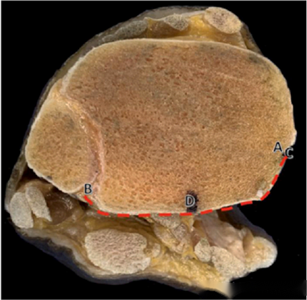
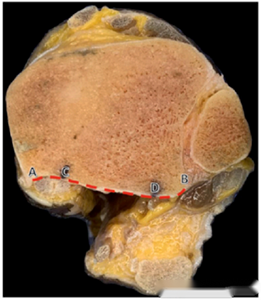
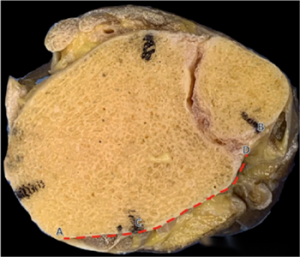
● Şemada, üç yaklaşım için arka malleolün maruz kalma aralığı gösterilmektedir. AB, arka malleolün genel aralığını, CD ise maruz kalan aralığı temsil eder ve CD/AB maruz kalma oranıdır. Yukarıdan aşağıya doğru, mePM, moPM ve PM için maruz kalma aralıkları gösterilmiştir. PM yaklaşımının en geniş maruz kalma aralığına sahip olduğu açıktır.
Kesi ile nörovasküler demet arasındaki mesafeye gelince, PM yaklaşımı 25,5 mm ile en büyük mesafeye sahiptir. Bu, mePM'nin 17,25 mm'sinden ve moPM'nin 7,5 mm'sinden daha büyüktür. Bu, PM yaklaşımının ameliyat sırasında nörovasküler demet yaralanması olasılığının en düşük olduğu yöntem olduğunu gösterir.

● Şemada, üç yaklaşım için kesi ile nörovasküler demet arasındaki mesafeler gösterilmektedir. Soldan sağa doğru, mePM, moPM ve PM yaklaşımları için mesafeler gösterilmiştir. PM yaklaşımının nörovasküler demete olan mesafesinin en büyük olduğu açıktır.
Yayın tarihi: 31 Mayıs 2024










